As political instability, riots, natural and manmade disasters become more of a threat, people the world over are planning for situations when there may not be enough food available on the shelves of stores, when it won’t be possible to grow your own produce, and when foraged food may be contaminated.
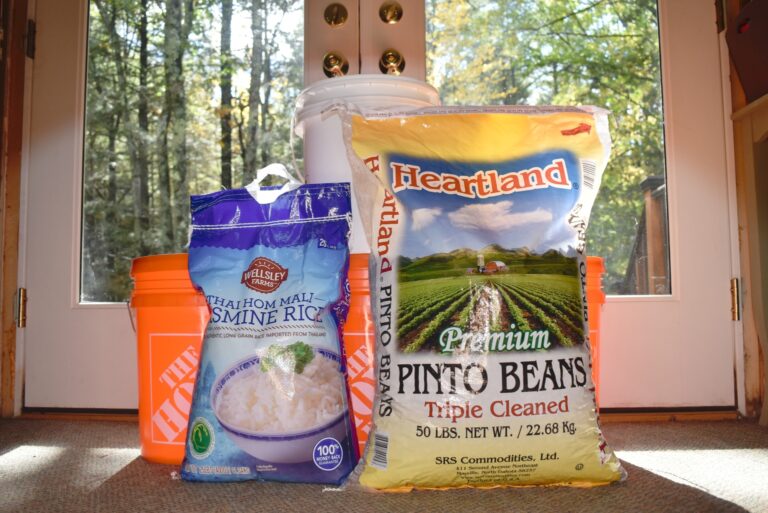
So as the Boy Scout motto states, it is best to ‘BE PREPARED’ and this is where the ability to choose foods that last, and store them for the longest shelf life possible is a skill as necessary today as it was to the early pioneers who moved west not knowing exactly what to expect.
We just don’t know what lies ahead but choosing the longest lasting foods will give us a good start.
Choose foods high in carbs and protein that will get you through SHTF situations that may last years.
This list does not however cover everything you need to survive – it is simply a list of the items that will last the longest in storage that you may want to consider stockpiling.
When it comes to storage, survivalists have their own personal preferences – some will not save all their dry goods in food grade plastic containers, but rather want to use glass, because they can be used to can fresh produce if and when it becomes available as the dry goods are used up.
If you do choose to seal produce into mason jars you can get a vacuum sealer attachment to extract excess air from the jar for better storage or buy these special lids for storage.
For best results with food grade storage buckets, you’ll need to use oxygen absorbers and Mylar bags that keep food safe from light, moisture, heat, and those pesky rodents.
When buying Mylar bags check the quality before purchasing; they should have a complete aluminum foil layer core and not simply a sprayed on metalized polyester core.
These are the 10 foods that made our list. If you have other recommendations, please feel free to comment below.
1. Rice
When you visit a link in this article that takes you to a different website where you can purchase something, I may earn a commission. Read my full disclosure for more details.
White rice can last between 25 to 30 years if it is kept in a dry, oxygen free environment. It may be worthwhile investing in a vacuum sealer to seal your precious supplies before SHTF and there is no electricity to use it. The only thing to watch out for with rice is rice weevil, which is a reddish brown bug that could get into your supplies.
That’s why your vacuum packed rice should be sealed into Mylar bags to prevent them getting in and also to keep the bags of rice safe from rodents. It is also a good idea to put in small bags of desiccant (silica gels) whose beads will absorb moisture from any air inside the container.
Brown rice has a shorter shelf life of around 6 to 8 months if saved in the bag you bought it from the supermarket – but if vacuum sealed it can last between 4 to 5 years. Make sure to buy plain rice that is not mixed with dried herbs and spices as these will not last as long as the rice.
There are many varieties of rice to choose from and you will probably want various varieties such as basmati, jasmine, Thai rice, American long grain, and short grain Arborio rice to ring the changes at meal times.
There is also red rice, and wild rice to consider, but overall it is your white rice that has the longest shelf life.

2. Beans
Beans taste the best if they are consumed within 2 to 3 years of storing them; after this length of time they tend to take longer to cook and lose some of their flavor.
But, as long as you have spices you can still have tasty meals for many years as beans are classified as having an indefinite shelf life.
Beans are a popular choice for survivalists because they are relatively cheap, low in fat and cholesterol, but high in protein, fiber, and vitamins. Store a variety of beans ranging from pinto to kidney, black beans to red beans to ensure meal times don’t get boring.
Store your beans in airtight containers after vacuum packing them with moisture prevention to make sure they last.
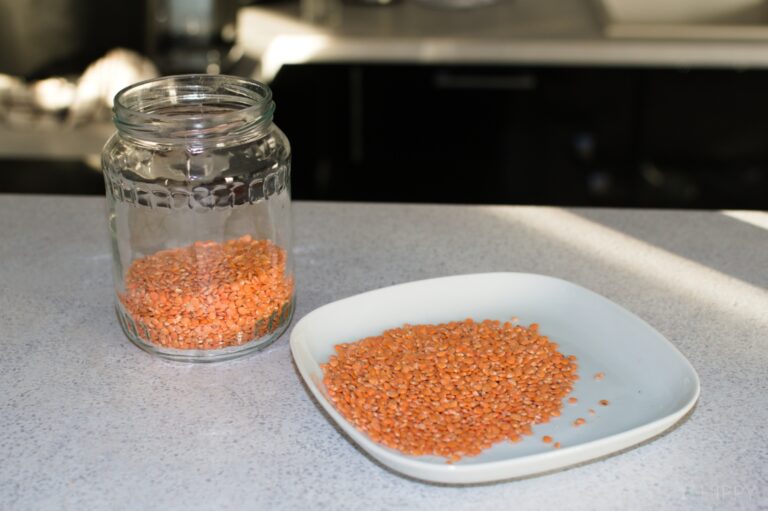
3. Lentils/pulses
Always buy whole lentils or pules – as soon as they are split or ground into smaller pieces like for soup mix the shelf life shortens.
Whole lentils will last about 2 to 3 years before the flavor starts to deteriorate – this does not mean they are off after that – they will also last indefinitely like beans.
The ordinary brown lentils are usually chosen as they still have their seed coat and will retain their shape after cooking and have a distinct nutty flavor.
The red, yellow and orange lentils do not have their seed coat and will get mushy when cooked, so are best used as a high protein addition to soups and stews to thicken them up.
Chickpeas are one of the tastiest additions to your long-term survival foods. Just boiled up and served with salt they are as addictive as popcorn and way healthier!
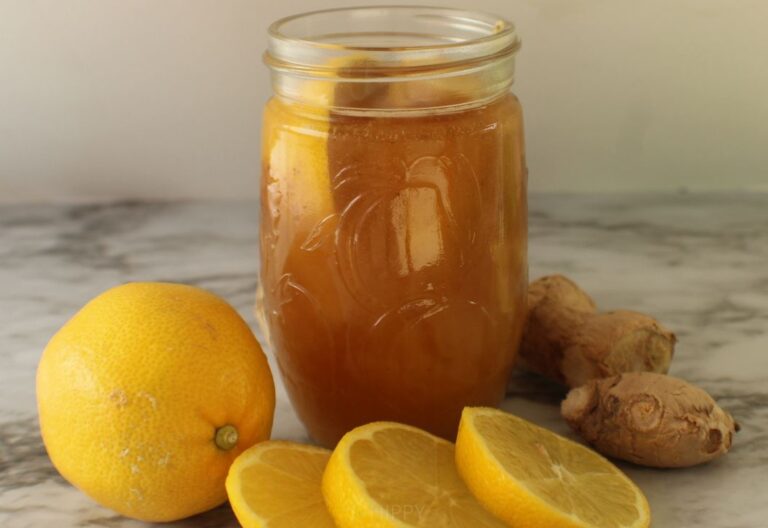
4. Honey
There are claims that raw honey lasts indefinitely and that honey found in the Egyptian pyramids was still good.
Whether you could actually eat it is questionable, as it surely must have changed over 3000 odd years, but for survival purposes when you want a food that will last 20 years or longer raw honey is your answer.
Commercial law requires food manufacturers to put a shelf life on goods sold – so you will see a stamp giving the expiry date of the honey which can be anything between 3 to 5 years after manufacture, but your honey will be safe to consume for around 20 years or more.
Raw honey means it has not been pasteurized to destroy the botulinum spores – which exist everywhere and are not a problem except for infants – no not feed honey to babies under a year as their bodies have not yet developed the antibodies to botulinum.
Heating honey destroys the enzymes that help our bodies digest honey, and if you think heating it will destroy botulinum spores then you are correct – but the heat would have to be so high the honey itself would be ruined and not worth eating.
Mixing honey with corn or cane syrup as is practised in certain countries that then export the so-called ‘pure’ honey will affect its shelf life. Rather obtain your raw honey from a reputable beekeeper to make sure it is unadulterated.
The type of honey doesn’t matter – it’s simply a matter of taste whether you prefer orange blossom honey, wild flower honey, saligna (gum tree) honey or Manuka honey (from Leptospermum scoparium, commonly known as the Manuka bush, native to New Zealand), or any other particular type of honey.
As long as the moisture content in the honey is below 18% it will keep. Most honeys have a moisture content of between 14% and 18% and although honey will crystallize over time, heating it a little will restore it to its original form.
Too much moisture content and it will spoil as the natural airborne yeasts (the ones you use for making sourdough bread starter) will be activated when there is too much water content.
To save storage space you can even dehydrate your own honey (link to article on Dehydrating Honey). Adding water to the honey powder will restore it to its original consistency, or you can use it powdered in various beverages or when cooking.
There is talk about fermented honey – the fermentation process changing the sugars in the honey to alcohol, but seriously why would a prepper need to do this? Honey is stored to provide the sweetness needed to keep people going when they are using many calories per day in survival situations.
It can be added to barbeque meat marinades, to various porridges and pancakes and is a treat on fruit. With its antibiotic properties honey can also be used to sooth various rashes and small abrasions, as well as for soothing sore throats and helping with coughs and colds.
5. Pasta
Freeze dried and commercially packaged pasta can last up to 20 years. You average pasta you buy at the supermarket will last for around 1 to 2 years past the manufacturer’s expiration date, giving you around 4 years of shelf life.
Whether you add lots of pasta to your food stash depends on a number of factors: Will you have enough fresh water available to cook the pasta? Do you have enough other food to make a tasty meal?
And most importantly, Are you a pasta lover? While a cup of plain boiled rice with a little salt will go down quite well, a cup of plain boiled pasta won’t taste so good.
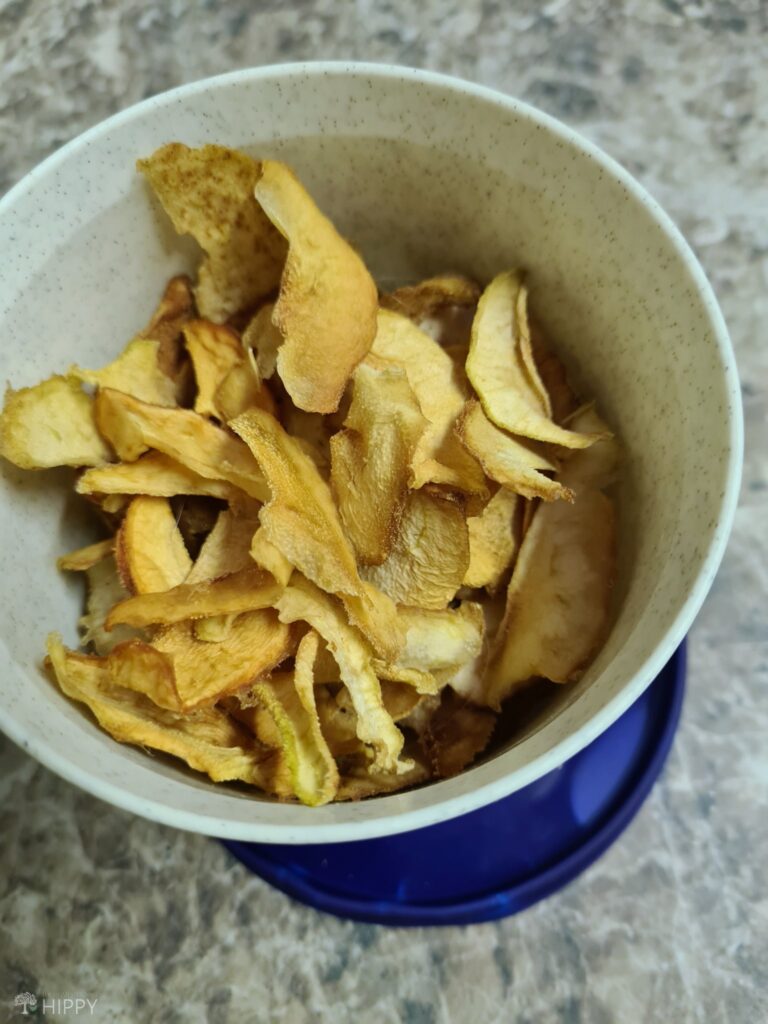
6. Dried Fruit
Dried fruit can last 5 years or so – dates, raisins, apricots, cranberries or goji berries are high in anti-oxidants, and provide sugar for energy that can keep you going. They can be soaked in water to plump out again and be used in all sorts of recipes from sweet to savory.
Add to stews or roasts, make Scottish Rock Cakes, spice up apple pie, use as a snack or even boil and make into a fruit drink.
Many pioneer recipes used dried fruit, and the Hunsa people, who live in the mountainous area of Pakistan between the Himalayas, the Hindu Kush and the Karakoram range (home to K2), survive on dried apricots for part of the year, and are reputed to be among the longest lived people in the world.
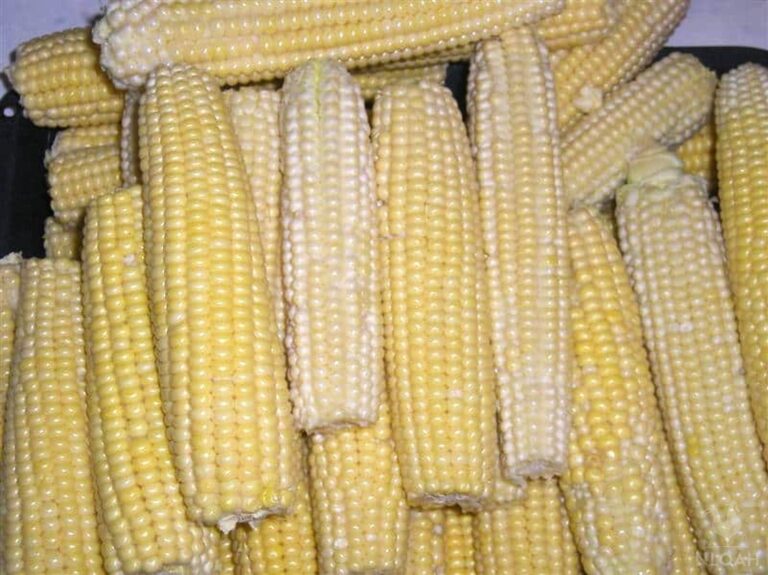
7. Corn
Dried corn can have a 10-year shelf life. Remember the Bible story with the seven years of fat and the seven years of lean in Egypt?
The pharaoh, taking Joseph’s interpretation of his dream seriously stored grain to last through the lean years after the seven years of good harvests – and in those days there were no vacuum sealers, or Mylar bags!
Vacuum seal your dried corn kernels into smallish packages and place them in larger sealed containers to keep them safe from rodents.
Corn can be used in many ways from sweet to savory dishes and is high in vitamins, minerals, carbs, and fiber although it is low in protein and fat – but you can balance that out by storing canned or dried meats.
8. Canned Meat
Spam, ham, meatballs, sausages, and stews in cans can be a bit on the heavy side and are best for bugging in situations, however if you expect to be on the move then learn to make your own pemmican that will last for years if vacuum sealed.
South African biltong is also a good option and many people find it superior to jerky (link to article here).
Whereas meat in cans will last around 5 years according to the USDA, biltong, jerky or pemmican will last up to 20 years, if stored in a freezer, but if there is no electricity available when SHTF, then expect around 5 years for dried meat under good conditions.
Be very careful if you discover mold on your dried meat – rather dispose of it where animals can’t get it either. The mold can make you very ill – someone I know cut off the bit of mold on the outside of his biltong, thinking the inside would be fine to eat.
He ended up being taken to hospital by ambulance as he was too weak to even stagger to his car and spent 10 days in intensive care as he struggled for his life!
9. Hardtack
If properly prepared and stored hardtack will last from 5 to 10 years and there are reports of it lasting 25 years and longer. It was what sailors took on their ships, and soldiers took to war from ancient times.
In a compilation of Roman laws called the Codex Theodosianus, it was stated that soldiers should be supplied with hardtack (basically flour and water with some salt added that is dried out to last a long time). Their rations also included wine and mutton, vinegar and bread.
Basically hard tack does not have much flavor at all but it will keep you alive and is a useful addition to add to long shelf life foods. Make sure it is properly dried out before storing.
These days, vacuum packing and packets of desiccant will assist in keeping it dry, unlike sailors of the past who were unlucky in that weevils and moisture often got into what were termed the ‘ship’s biscuits’.
Their hardtack also earned some derogatory names like ‘tooth breakers’, ‘worm castles’, and ‘dog biscuits’. You do need to soften your hard tack a bit before eating it!
10. Freeze Dried Meals
Freeze dried meals will last 20 years or more – all you need is water to reconstitute these meals. If you think you are going to have difficulty finding fresh water that is safe to drink, or that can be made safe to drink, then canned food may be a better option.
Freeze dried meals are also quite expensive requiring a considerable investment if you are thinking of buying them in quantity for a situation that may or may not occur.
If you expect to be on the move and need to go light then the freeze dried meals are best, as around 90% of the weight of the food is removed during the freeze-drying process.
Some people prefer ready-made freeze dried meals, while others prefer to buy individual items like freeze-dried onions to add to their stash and use to add flavor to other long life foods, like rice.
Final Words
Simply buying the longest lasting foods won’t necessarily give you a balanced diet, or allow you to construct varied meals…
After going through this list you may want to add others that are not so long-lasting like wheat flour with a shelf life of up to 2 years, baking soda which can last 5 years or active dried yeast, usually only two years, in order to make bread
Some people can survive without bread – then the rice, lentils and canned or dried meat will be sufficient.
Your family’s preferences, dietary requirements and allergies will dictate what you need to store in quantity in order to keep them alive for a long period of time when fresh food may be unavailable.
If you are currently on a low carb diet, do realize that in survival situations you will be needing far more carbs than you normally consume…
This is because you’ll be using a lot more energy in having to prepare shelter and food, arrange for fresh water, cut firewood and basically live close to nature as our ancestors did.
As has been seen in various places around the world recently it just take a day or two of rioting and looting for store shelves to be emptied. Don’t get caught short – start prepping now.
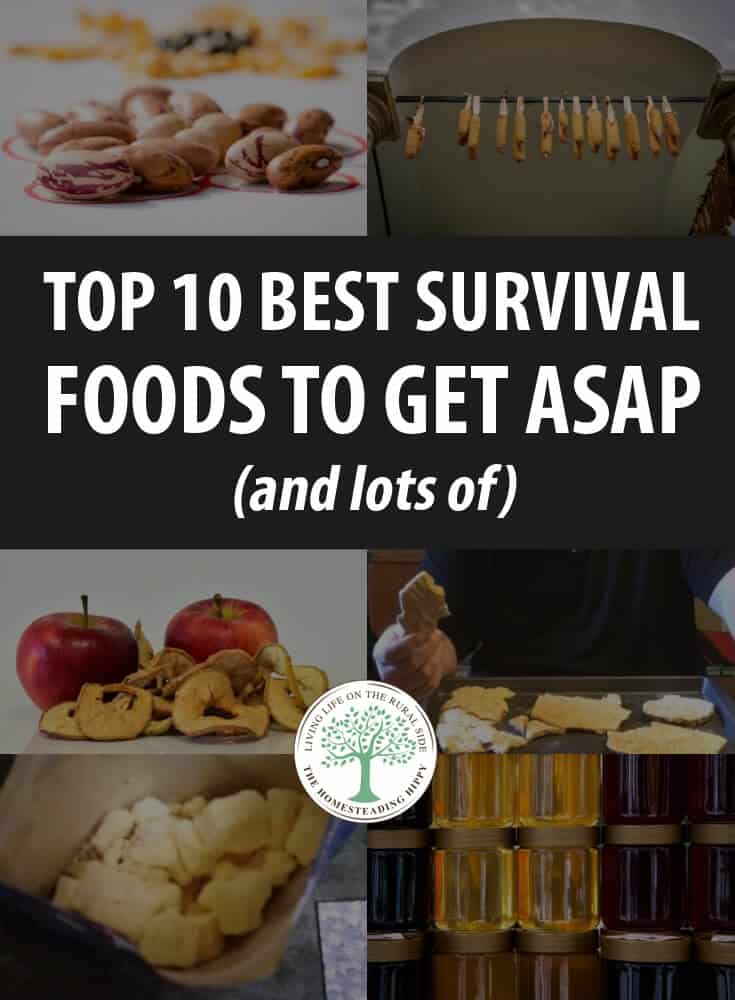

As a child I wanted to grow up and marry a farmer… simply because it was so different from my life right on the shores of the ocean. Well, I didn’t marry a farmer but a surfer instead. The urge, however, to grow stuff and make great food for a big family never left. We are on acreage with a sea view and easy access to fresh caught crayfish and other seafood – the best of both worlds. As an artist and writer I enjoy creating new recipes, tweaking traditional ones, and sharing the results not only with family and friends, but online. Mee the rest of the team at this page.

Instead of buying canned meat, learn to can your own. It’s relatively easy, it’s safe, and you get exactly what you want.
I’ve got venison, chunk chicken, chunk beef, bacon and link sausage canned and stored away. Shop the sales and can what is on sale.
Same for vegetables. Pressure canned tomatoes will store for years (I’ve got some going on 8 years and they’re still as good as the day I canned them), while water bath canned tomatoes are only good for a year or so. If you have a farmer’s market nearby, you can get fresh produce in season and can that. If not, again, shop the sales and can what goes on sale at the grocery store.
A couple other items to add would be Peanut Butter and Protein Drink Powder.. You can eat the peanut butter right from the container if need be. And the protein powder has a good amount of protein to sustain, plus you can put it in a bag, and it is light weight. I have also purchased some summer sausage. Until opened it does not need refrigeration.